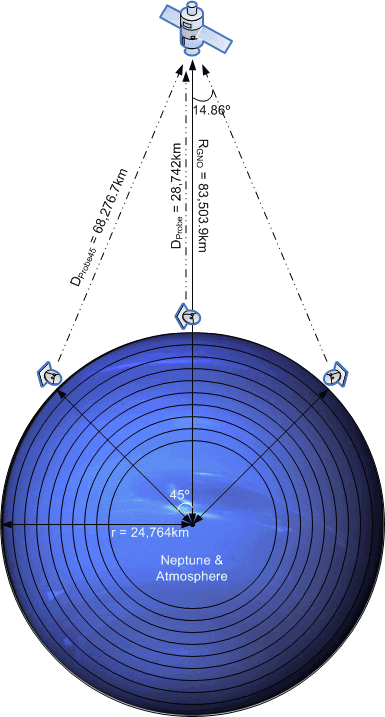|
Introduction
Over the years, NASA has had the ambitions to send missions out to the gas giant planets to learn more about their composition and structure. Such recent missions as the Cassini-Huygens orbiter [1] and probe to Saturn and its moon Titan have sparked an interest in examining Neptune.
It is the purpose of this project to successfully design a communications link between three probes entering Neptune's atmosphere at -45º, 0º, and 45º by relaying the data collected by these probes successfully to the Earth. While these probes will descend 420km into the atmosphere over a 50 hour period, it will be necessary to relay this collected data to an orbiting satellite around Neptune to maintain this data and transmit it to Earth at appropriate times.
The concept of using a relay satellite emerges for a variety of reasons. Due to the rotation of the Earth and Neptune, there will be periods of time that the relay satellites are not within line-of-sight of an Earth Station receiver. Secondly, due to Neptune's dense atmosphere, it would be extremely difficult to transmit data at relatively high speeds directly from the battery-powered probe to the Earth.
The relay satellite will allow the data recorded from the probes to be safely stored and transmitted at a higher power towards the Earth whenever it is in direct view. A satellite in Geosynchronous Neptune Orbit (GNO) is also able to have a larger dish antenna pointed directly at the Earth, whereas a large dish antenna on the probes might cause complications as it falls through the atmosphere.
Figure 1 shows a brief overview of the planned project; the values shown are calculated in other sections of this report.

Figure 1: Overview of the Project
Next Section »
References:
1. Cassini-Huygens Home Page (http://saturn.jpl.nasa.gov/home/index.cfm), NASA
|


